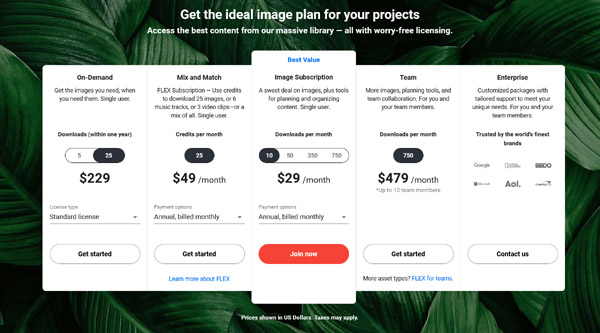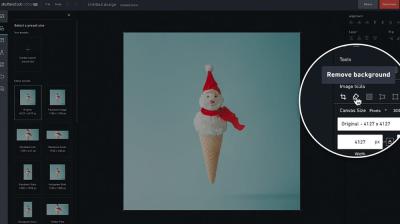If you’ve ever wondered how photographers and hobbyists turn their passion into profit, selling photos on Shutterstock might be the perfect avenue. It’s a popular stock photography platform where creators can upload their images and earn money whenever someone downloads them. The process is straightforward, but understanding how much you can charge and what factors influence your earnings is key to making the most out of it. Whether you’re just starting out or looking to optimize your current portfolio, knowing the ins and outs of Shutterstock‘s platform can help you navigate the world of stock photography with confidence.
Understanding Shutterstock’s Licensing and Payment Structure
When it comes to earning money on Shutterstock, the licensing options you choose and how Shutterstock compensates you are crucial pieces of the puzzle.
- Standard License: Suitable for most uses like websites, social media, and print materials up to 500,000 copies or views.
- Enhanced License: Designed for more extensive use, such as product packaging or advertisements with large distribution.
As a contributor, your earnings depend largely on the type of license purchased and your contributor level. Shutterstock has a tiered royalty system that rewards contributors based on their total lifetime earnings and the number of downloads:
| Contributor Level | Download Range | Royalty Rate (Standard License) |
|---|---|---|
| Standard | 0 – 50,000 | 15% of the price |
| Premier | 50,001 – 250,000 | 20% of the price |
| Elite | Over 250,000 | 30% of the price |
Shutterstock‘s pricing for customers varies depending on the license type and the size of the image download. Typically, a standard license for a small to medium image might cost around $10-$50, and as a contributor, you’ll earn a percentage of that sale. Keep in mind, the more you contribute and the higher your tier, the better your earning potential gets. This tiered system is designed to motivate contributors to upload high-quality images consistently, rewarding those who become top contributors with higher royalty rates. So, understanding this structure helps you set realistic expectations about how much you can earn per photo and strategize your uploads accordingly.
Factors That Affect Your Earnings Per Photo
When it comes to earning money on Shutterstock, your income per photo isn’t set in stone — it’s influenced by a bunch of different factors. Understanding these can help you optimize your submissions and maximize your earnings. So, let’s break down what really impacts how much you can earn per photo.
1. Contributor Level and Royalties
Shutterstock has a tiered contributor system, starting from Standard to Premium contributors. As you submit more high-quality images and meet certain milestones, you move up the levels. Each level comes with a higher royalty rate, meaning you get a bigger cut per sale. So, the more you contribute, the more you can earn per photo, especially if you’re consistently uploading top-notch images.
2. Image Quality and Relevance
High-quality, well-composed, and relevant images tend to sell better. Shutterstock’s algorithm favors images that are sharp, properly exposed, and meet current market demands. Unique or trending content can command higher prices and attract more buyers, which translates to higher earnings for you.
3. Image Size and Resolution
Uploading images with larger dimensions and higher resolution can sometimes fetch a higher price, especially for buyers who need high-quality files for print or large displays. Always upload the highest quality version you can — it gives you more pricing options and increases your chances of earning more per download.
4. Keywording and Metadata
Properly keywording your images helps buyers find them easily. Well-optimized keywords increase your images’ visibility, which can lead to more downloads. The more your images are discovered, the more you earn. So, invest time in accurate and descriptive keywording to boost your sales potential.
5. Market Demand and Trends
Some types of images are more popular at certain times. For example, during holidays, images related to festivities tend to sell better. Keeping an eye on market trends and uploading relevant content can help you earn more per photo. Also, seasonal and topical images often command higher prices temporarily.
6. Licensing Options
Shutterstock offers various licensing options — Standard, Enhanced, and Extended. Generally, the more comprehensive the license, the higher the price. If your images are licensed for extended use, you can earn significantly more per download, especially if they’re in high demand for commercial projects.
Average Earnings for Photographers on Shutterstock
So, what can you really expect to earn as a Shutterstock contributor? It varies widely depending on your level, the quality of your images, and how often they sell. But let’s look at some averages to give you a ballpark idea.
For most photographers starting out, the earnings per download might be around $0.25 to $0.50. This might not seem like much, but remember, once your portfolio grows and you improve your skills, your earnings can increase significantly.
As you advance and reach higher contributor levels, your royalty rates improve. For example:
- Standard Contributor: earns around 20-30% royalty per download, which can equate to roughly $0.25 to $0.35 per image.
- Elite Contributor: can earn closer to 30-40%, leading to about $0.35 to $0.50 per download.
- Premium or Top-Tier Contributors: have the potential to earn even more, especially if their images are popular and frequently purchased.
In terms of actual earnings, some top contributors make several thousand dollars per month, but this is usually after they’ve built a substantial portfolio and have consistent sales. The average contributor, however, might earn a few hundred dollars a month, which can grow over time.
It’s also worth noting that your total income depends on how many images you upload and how often they’re downloaded. Think of it as a snowball effect—more high-quality images lead to more sales, which leads to higher overall earnings.
Finally, don’t forget that Shutterstock is a long-term game. Patience, continuous learning, and consistently uploading great images are key to increasing your average earnings over time. So, keep creating, keyword wisely, and watch your Shutterstock earnings grow!
Tips to Maximize Your Photo Revenue on Shutterstock
So, you’re eager to boost your earnings on Shutterstock? Great! The good news is, there are several strategies you can use to make sure you’re getting the most out of your photography. Here are some tips to help you maximize your photo revenue:
Understand What Buyers Want
Take some time to browse the popular images on Shutterstock. Notice trends, themes, and styles that sell well. Are buyers looking for vibrant lifestyle shots, minimalistic designs, or specific industries like technology or health? Aligning your portfolio with current demand can lead to more downloads and higher earnings.
Optimize Your Keywords and Titles
Remember, people find your photos through searches. Use accurate, descriptive keywords that cover all relevant aspects of your image. Include things like the subject, mood, colors, and location if applicable. A well-crafted title also helps your image stand out. Think of keywords as the bridge that connects your photo to potential buyers.
Upload Consistently and Diversify
Don’t put all your eggs in one basket. Upload regularly to keep your portfolio fresh and relevant. Also, diversify your themes and styles—this broadens your appeal and increases the chance of your photos being downloaded. The more variety you offer, the higher your chances of attracting different buyers.
Use High-Quality, Well-Edited Photos
Quality is king. Make sure your images are sharp, properly exposed, and free of distractions. Invest in good editing software, and don’t be afraid to tweak your photos to perfection. High-quality images justify higher prices and attract customers willing to pay more.
Offer Exclusive Content When Appropriate
If you have unique, high-demand images, consider offering exclusive content for an extra fee. While non-exclusive images can be downloaded multiple times, exclusives can command higher prices and give you a competitive edge.
Engage with the Shutterstock Community
Connect with other contributors and learn from their experiences. Participate in forums, attend webinars, or read tutorials. Sometimes, a small tip or insight can lead to a big boost in your sales.
Monitor Your Performance and Adjust
Keep an eye on which images perform best. Shutterstock provides analytics that can guide your future uploads. If certain themes or styles sell better, focus more on those. Adjust your keywords, titles, or even the images themselves based on what the data shows.
By following these tips, you’ll be well on your way to increasing your photo revenue on Shutterstock. It’s all about understanding your market, continually improving your skills, and staying consistent. Happy shooting!
Conclusion and Final Thoughts on Pricing Your Photos
Pricing your photos on Shutterstock might seem tricky at first, but with a little insight, you can develop a strategy that works for you. Remember, the platform typically offers a royalty system based on your exclusive or non-exclusive status, and the download type. Setting the right price involves understanding your content’s value and the market demand.
While Shutterstock doesn’t allow you to set a specific price per photo, your earnings are influenced by the size of the image (standard or enhanced license), your contributor level, and whether you’re exclusive or non-exclusive. The key is to create high-quality images that meet buyer needs and to optimize your portfolio for visibility.
Here are some final tips to keep in mind:
- Focus on quality over quantity: Well-crafted, high-resolution images are more likely to fetch higher royalties.
- Stay current: Keep an eye on trending topics and styles to ensure your portfolio stays relevant.
- Be patient: Building a steady income takes time, but consistent effort pays off.
- Learn from analytics: Use Shutterstock’s stats to understand what sells best and refine your approach accordingly.
Ultimately, pricing your photos isn’t about setting a fixed dollar amount but about understanding the value of your work within the platform’s ecosystem. By focusing on producing excellent images, strategic keywording, and staying engaged with the community, you’ll position yourself for success. Keep experimenting, stay persistent, and enjoy the creative journey—your efforts will pay off in more downloads and higher earnings over time.



